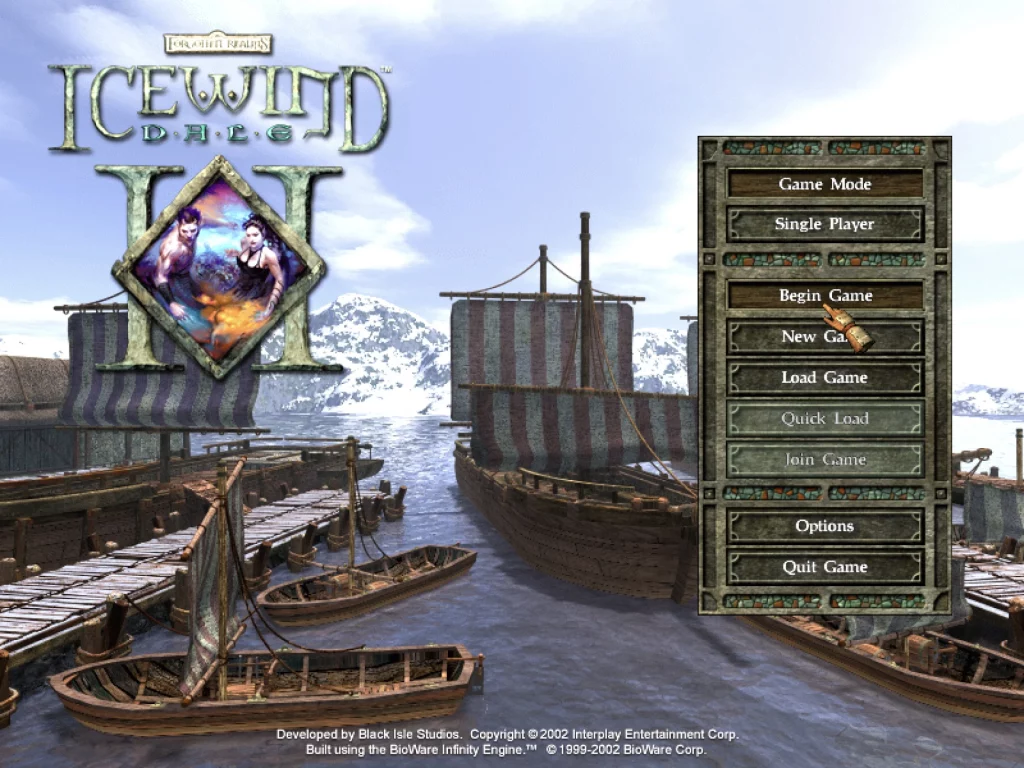
As someone who has been spending a lot of their spare time studying, playing, and buying older games, I’m experiencing the challenges of accessing certain titles first-hand.
In most cases, I can purchase the games in my wishlist without having to jump through any hoops. Steam has an impressive amount of titles and Microsoft’s continued backwards compatibility in their consoles is great. Despite the selection on both platforms, there is the occasional release that’s considered obscure enough to not be available on Steam or Xbox. Even if I can track it down on another platform, there is often an added caveat that deters me from buying.
Most recently, I had this experience with Icewind Dale 2.
Icewind Dale 2 is a unique case in the realm of classic Dungeons & Dragons titles. Game studio Beamdog has developed Enhanced Editions for the original Infinity Engine games to implement support for modern systems, availability on consoles, and various bug fixes. However, the only game that has not received this treatment, supposedly due to the source code being lost, is Icewind Dale 2.
Icewind Dale 2 is not entirely out of reach, though. The game is still available on GOG, albeit in its original 2002 form with the added risk of display issues on modern operating systems. To resolve this, various forums recommend installing mod fixes, inserting new .dll files, and manually editing config files. I’m not a fan of having to tinker just to launch a program; when I sit down to enjoy a game, I generally aim for a “plug-and-play” experience.
This is where GOG’s new initiative comes in. The Preservation Program aims to ensure stability and playability on the GOG platform for classic games that are no longer receiving updates from the original development studios. It appears that, in some cases, this is simply a stamp of approval on specific games that GOG has tested to work with Windows 10/11, but in the case of Icewind Dale 2, the changelog is a bit more extensive:
- Applied DDrawCompat to ensure compatibility with modern displays
- Set default settings to “High End” for the best visual experience right from the start
- Validated stability
- Verified compatibility with Windows 10 and 11
- Verified Cloud Saves support
The prominent update is the implementation of DDrawCompat, a third-party wrapper that resolves display issues with the deprecated DirectDraw API from Microsoft. Of course, this fix in itself could be applied without the involvement of GOG, as DDrawCompat is one of several potential fixes recommended by the forums I previously mentioned; however, the important fact here is that GOG has abstracted this need from potential buyers and implemented the fix themselves, presented with their own validation that the game is stable.
With GOG standing behind the quality of Icewind Dale 2 in its updated state, I bought the game and observed proper display behaviour after testing in the initial areas – I’ll be back for a full playthrough once I’ve had a chance to complete the first IWD.
Now, it’s not that this small correction to the classic title is game-changing, and I likely would have been capable of compiling a fix myself with some online help if I needed to. The key takeaway here is that GOG is committed to offering classics in a usable state. With these older titles, compatibility is not always a given. This is especially frustrating when you pay for a product that doesn’t work correctly with the system you purchased it on.
Without diving down the rabbit hole of ethical consumerism, I’m of the belief that games being officially sold should be playable as purchased. These small but impactful corrections GOG is making are absolutely crucial to achieving that. There’s a lot to think about here from a historical perspective, too.
GOG is already a great platform that I find myself using more and more, but this commitment to preserving classic titles is a commendable mission, one that I hope they continue to pursue.